Pressure Gauges
A pressure gauge is an instrument used to measure and display the pressure of a fluid (gas or liquid) within a system, providing a visual indication of pressure, typically in units such as pounds per square inch (PSI), bar, pascal (Pa), or other units, allowing operators to monitor and maintain the desired pressure levels for safe and efficient operation of equipment and processes.
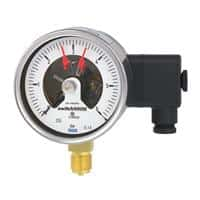
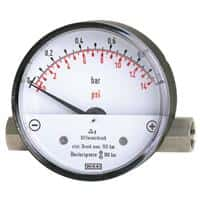
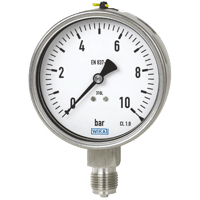
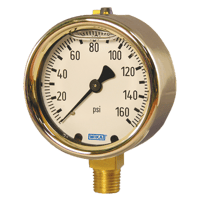
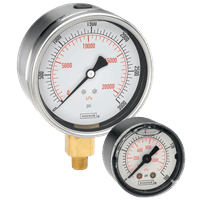
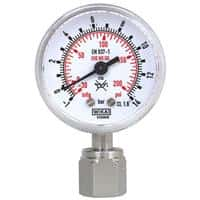
/PG7-Digital-Pressure-Gauge/Thumbs/200_main_PG7_Front.png)
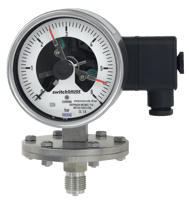
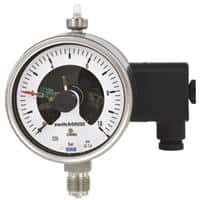
/PG5-Digital-Pressure-Gauge/Thumbs/200_main_PG5_Front.png)
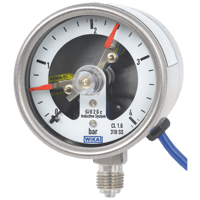
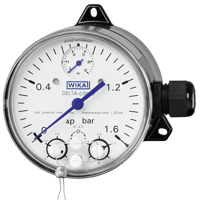
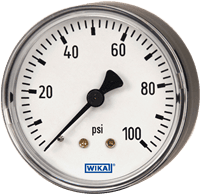
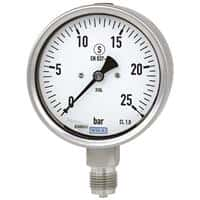
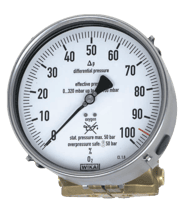
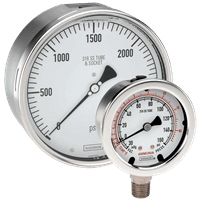
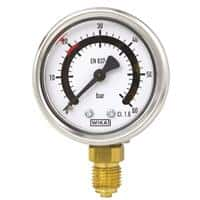
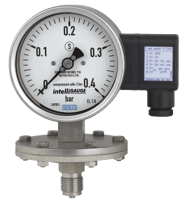
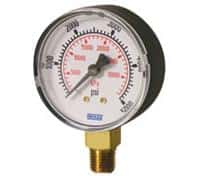
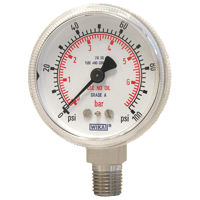
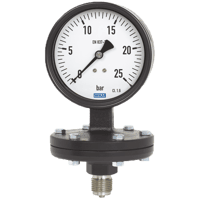
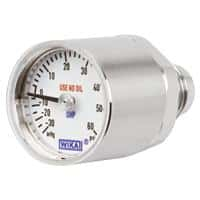
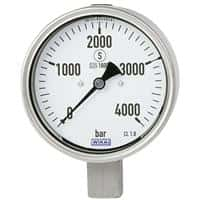
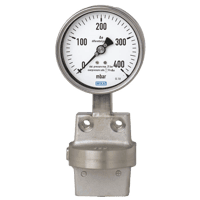
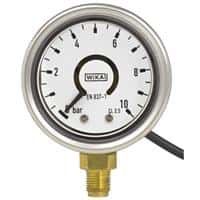
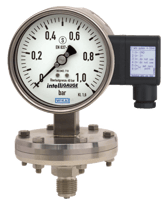
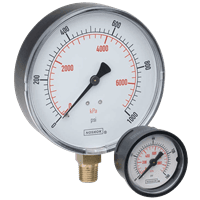
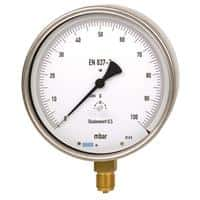
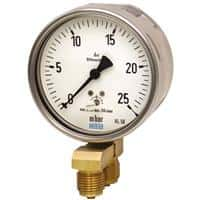
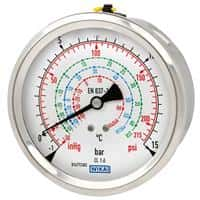
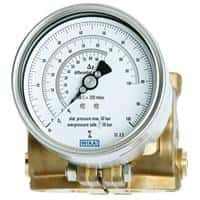
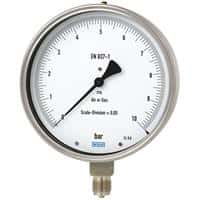
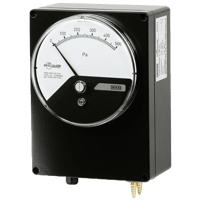
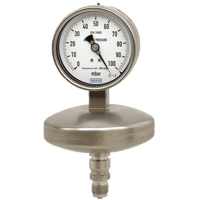
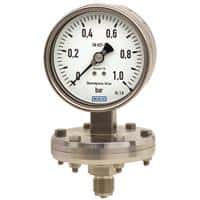
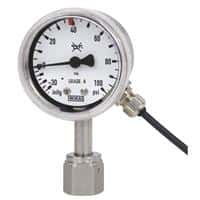
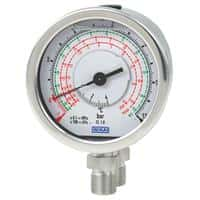
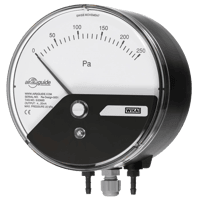
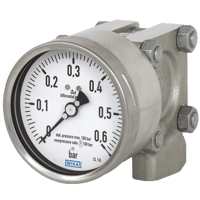
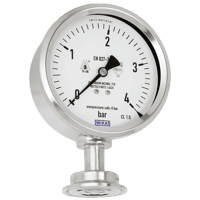
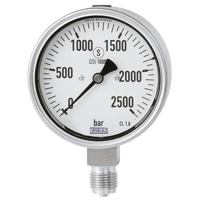
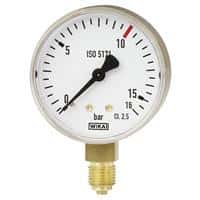
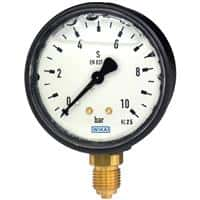
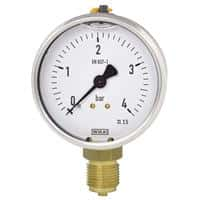
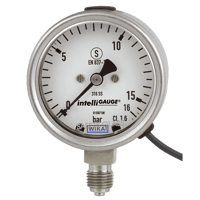

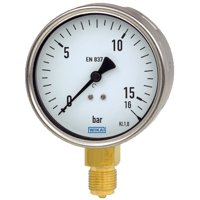
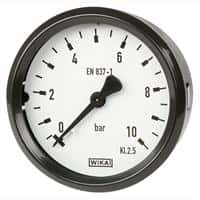
A pressure gauge is a fundamental instrument for monitoring and maintaining fluid pressure in a wide range of applications, as it helps ensure systems to operate within safe and efficient parameters, protecting equipment and personnel while optimizing performance. From simple mechanical gauges to advanced digital models, pressure gauges provide reliable, accurate, and versatile solutions for pressure measurement across numerous industries.
The core component of a pressure gauge that detects the pressure of the fluid is the pressure sensing element, it can be a Bourdon tube, diaphragm, or bellows, depending on the type of gauge and the pressure range it is designed to measure. The Bourdon tube is a curved, hollow tube that straightens as internal pressure increases, commonly used in mechanical pressure gauges for medium to high pressures. The diaphragm is a flexible membrane that deflects under pressure, used in gauges designed for low to medium pressures or where high accuracy is needed. The bellows, an accordion-like element that expands or contracts with pressure changes, is used in specific low-pressure applications. The sensing element's movement is transmitted to a pointer or needle through a series of gears or levers, which converts the pressure-induced motion into a readable display. The dial is a graduated scale that displays the pressure reading. The pointer or needle moves along this scale, indicating the current pressure. The scale can be marked in various pressure units, such as PSI, bar, or kPa. The outer casing of the gauge protects the internal components and is typically made of metal, plastic, or other durable materials, and the window is often glass or polycarbonate to allow clear visibility of the dial. The gauge has a threaded connection port or fitting to attach it to the system where the pressure is being measured, such as a pipe, tank, or vessel.
There are several types of pressure gauges, with the Bourdon tube pressure gauges being the most common, and suitable for a wide range of pressures (from low to very high), utilizing a curved tube that straightens with increasing pressure, causing the needle to move along the dial. Diaphragm pressure gauges use a flexible diaphragm as the sensing element, ideal for low to medium pressure ranges, and are suitable for corrosive or viscous fluids since the diaphragm can be made from materials resistant to the process fluid. Capsule pressure gauges are used for measuring low-pressure gases. They use two diaphragms welded together to form a capsule, which expands or contracts with pressure changes. Digital pressure gauges use electronic pressure sensors (e.g., piezoelectric, capacitive, or strain gauge) to measure pressure and display the reading on a digital screen, providing high accuracy, digital output, data logging, and remote monitoring capabilities. Differential pressure gauges measure the difference in pressure between two points within a system, and are commonly used in applications like filter monitoring or flow measurement, where knowing the pressure difference is more critical than absolute pressure.
Pressure gauges are used in industrial process control in industries such as oil and gas, chemical, pharmaceutical, and food processing to monitor and maintain the desired pressure levels in pipelines, reactors, and storage tanks. They are also used in HVAC - heating, ventilation, and air conditioning systems to measure air or refrigerant pressures, ensuring efficient system operation and maintaining comfort levels. The water and wastewater sectors use pressure gauges to monitor the pressure in water distribution systems, sewage systems, and treatment plants to prevent leaks, maintain flow rates, and ensure efficient operation. Automotive and aerospace industries use these pressure gauges in vehicles and aircraft to monitor critical pressures, such as tire pressure, brake system pressure, and hydraulic or pneumatic systems. Pressure gauges are used in medical devices, such as oxygen tanks and anesthesia machines, to monitor gas pressures critical to patient safety. Another popular application for pressure gauges is the maintenance of the correct pressure in hydraulic systems (e.g., in construction machinery, manufacturing equipment) and pneumatic systems (e.g., air compressors, air tools).
Pressure gauges provide immediate visual feedback of system pressure, enabling operators to quickly assess and respond to changes. Mechanical pressure gauges are simple, durable, and require no external power source, making them reliable for a wide range of applications, and they're suitable for measuring a wide range of pressures, from very low to extremely high, depending on the design. Mechanical gauges are generally inexpensive and require minimal maintenance, making them cost-effective solutions for many applications. Pressure gauges are available in various designs and materials to suit different fluids, temperatures, and environmental conditions.
What is meant by the accuracy class of a pressure gauge?
The accuracy class of a pressure gauge refers to a standardized designation that defines the allowable deviation or error range in the gauge's pressure readings relative to the true pressure value. It is expressed as a percentage of the full-scale value (the maximum measurable pressure range of the gauge) and indicates how close the displayed pressure reading is to the actual pressure.
The accuracy class is specified as a percentage, such as ±0.1%, ±0.5%, ±1%, ±2%, etc., which represents the maximum permissible error across the full scale of the gauge. For instance, a gauge with an accuracy class of ±1% means that the pressure reading can deviate by up to 1% of the full-scale value from the actual pressure.
The accuracy is calculated as: Maximum Permissible Error = Accuracy Class × Full-Scale Value
For example, if a pressure gauge has a full-scale value of 100 PSI and an accuracy class of ±1%, the maximum permissible error would be: Maximum Permissible Error = 1% × 100 = ±1 PSI
This means the reading could be off by ±1 PSI across the full range.
The maximum permissible error typically applies across the entire measurement range of the gauge. However, it is important to note that the accuracy might vary slightly at different points on the scale, often being most accurate at the midpoint of the scale.
Factors like temperature, vibration, and mounting orientation can affect the gauge's accuracy. Higher accuracy class gauges are often designed to withstand environmental variations with minimal impact on accuracy.